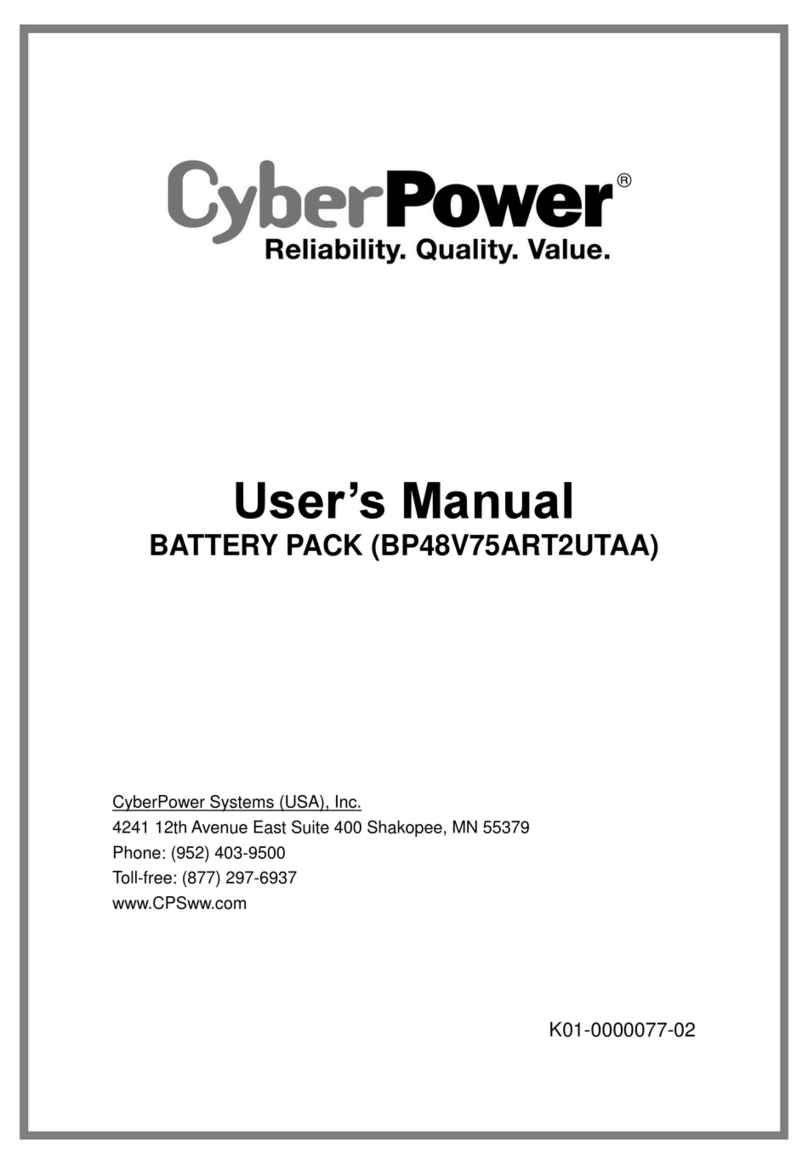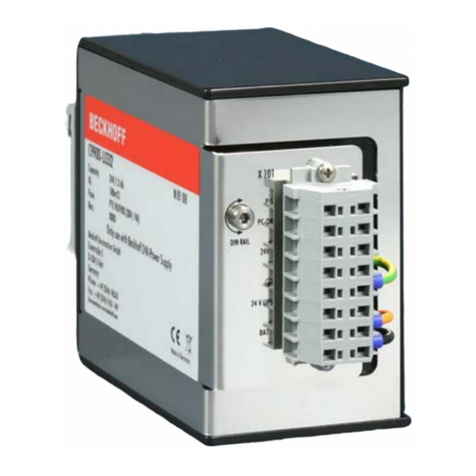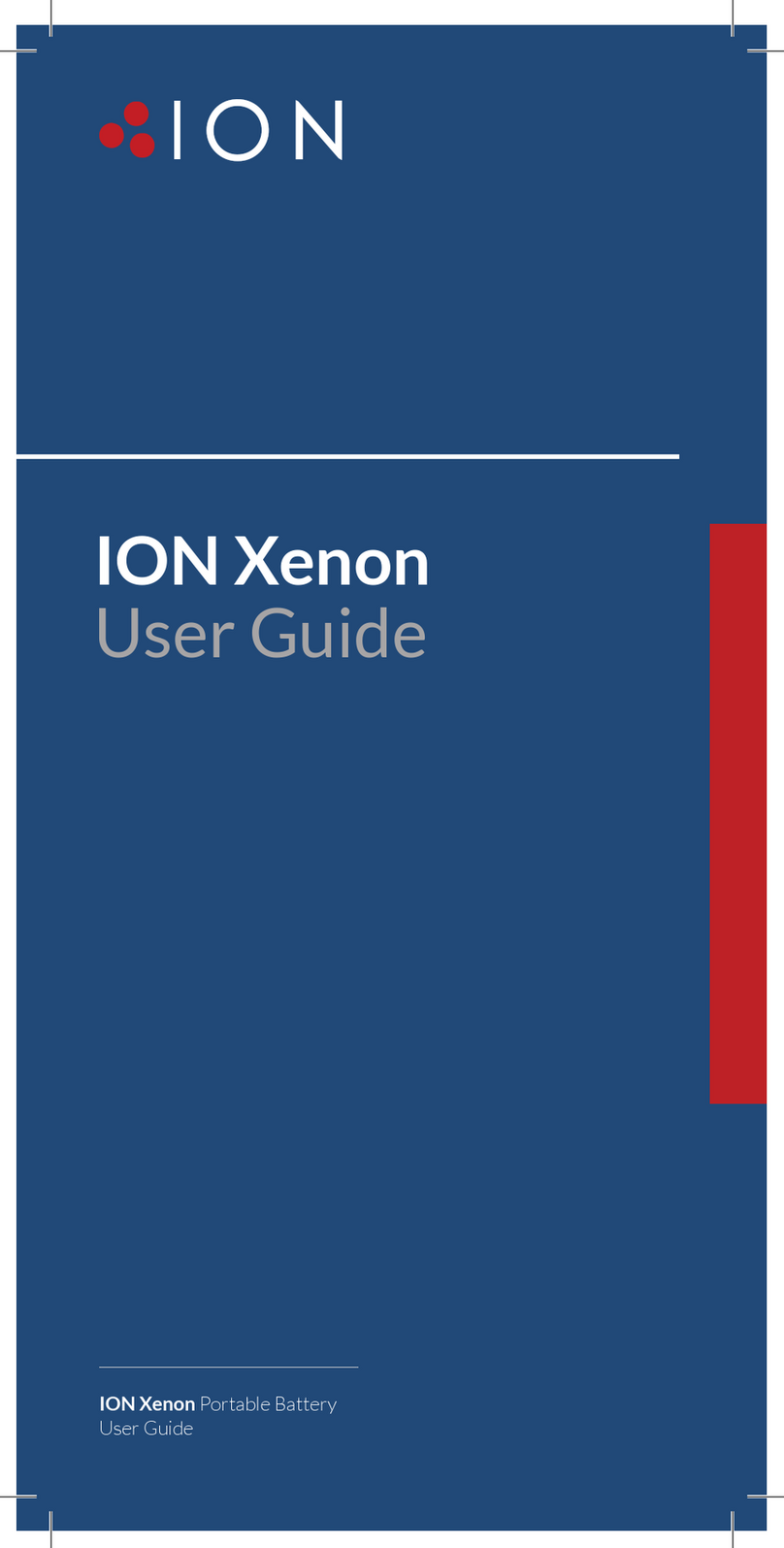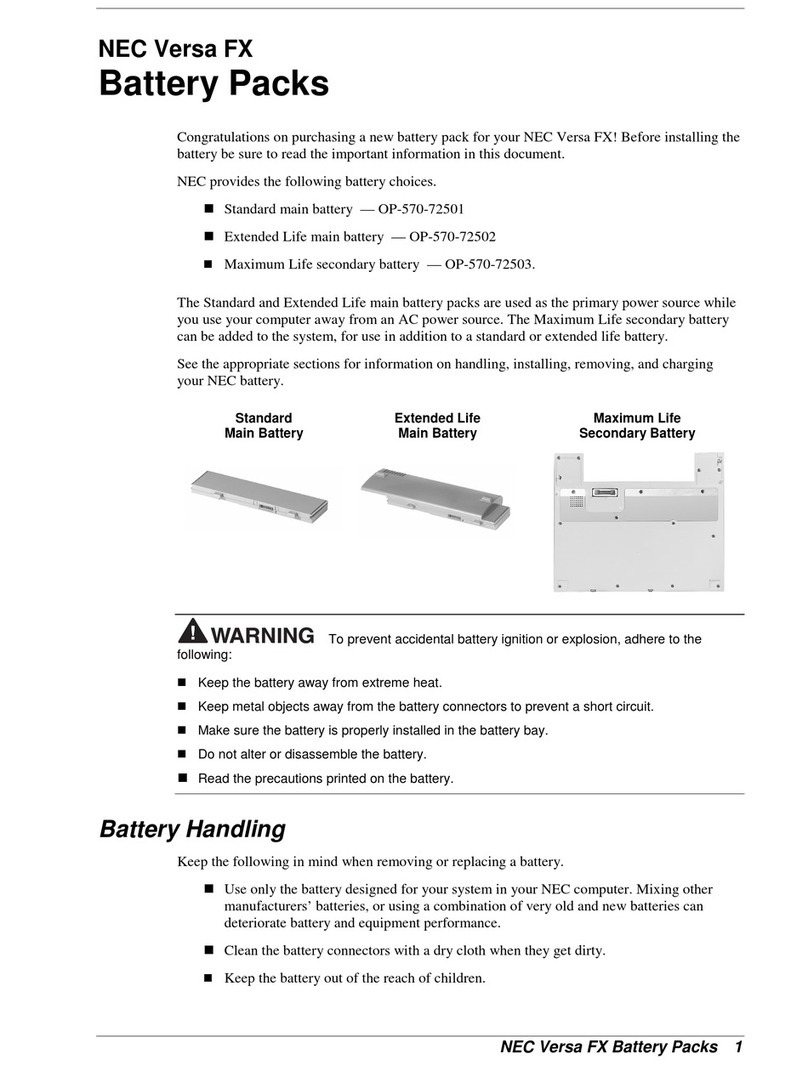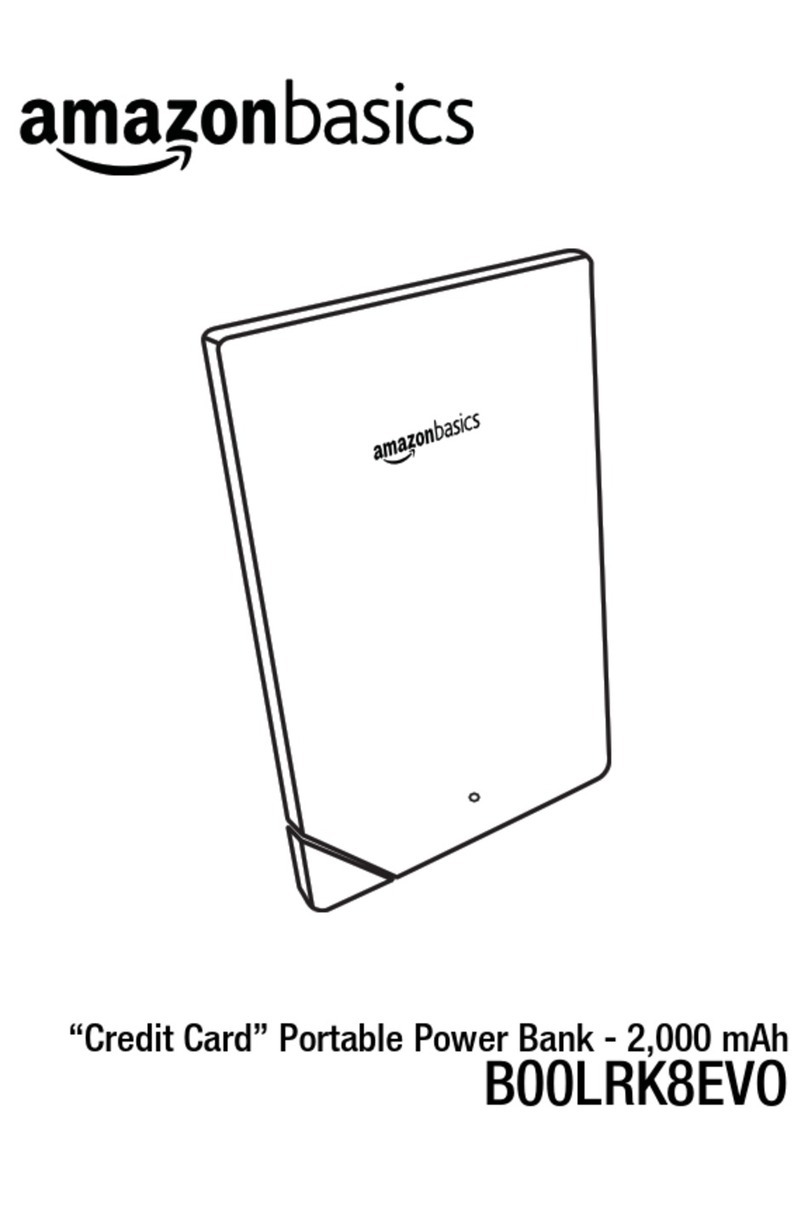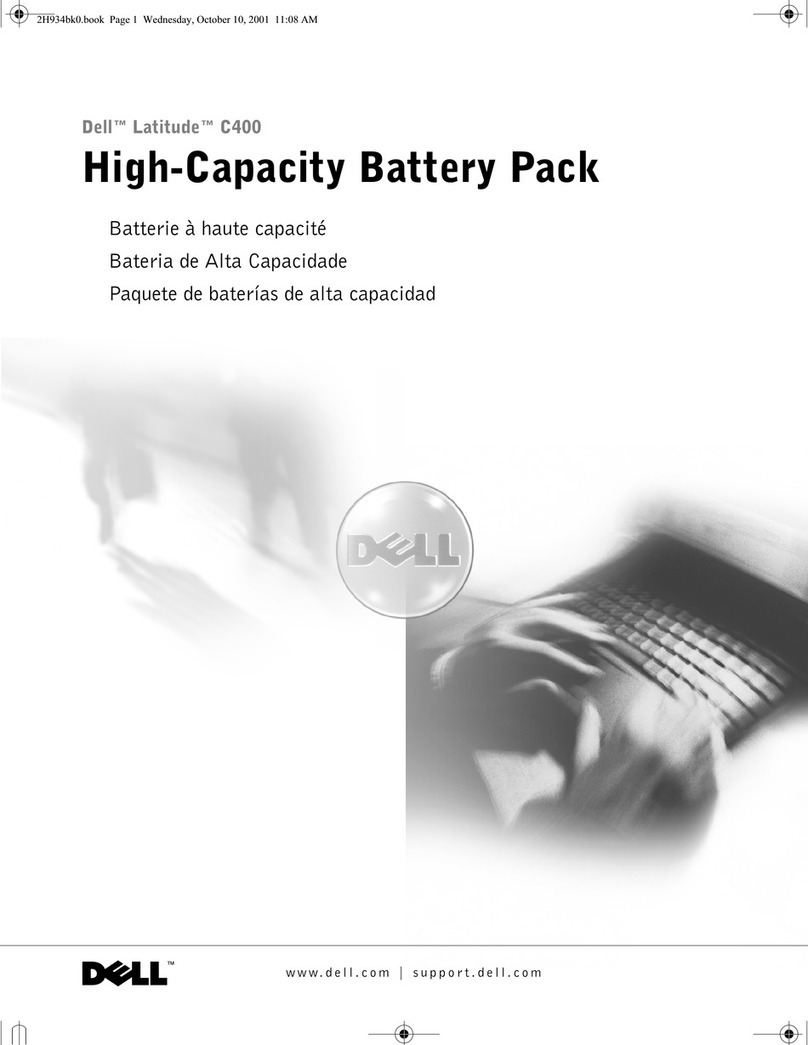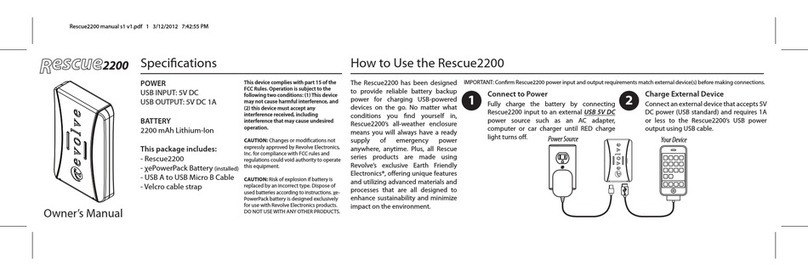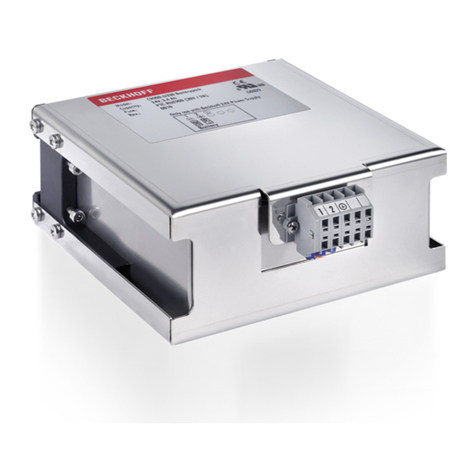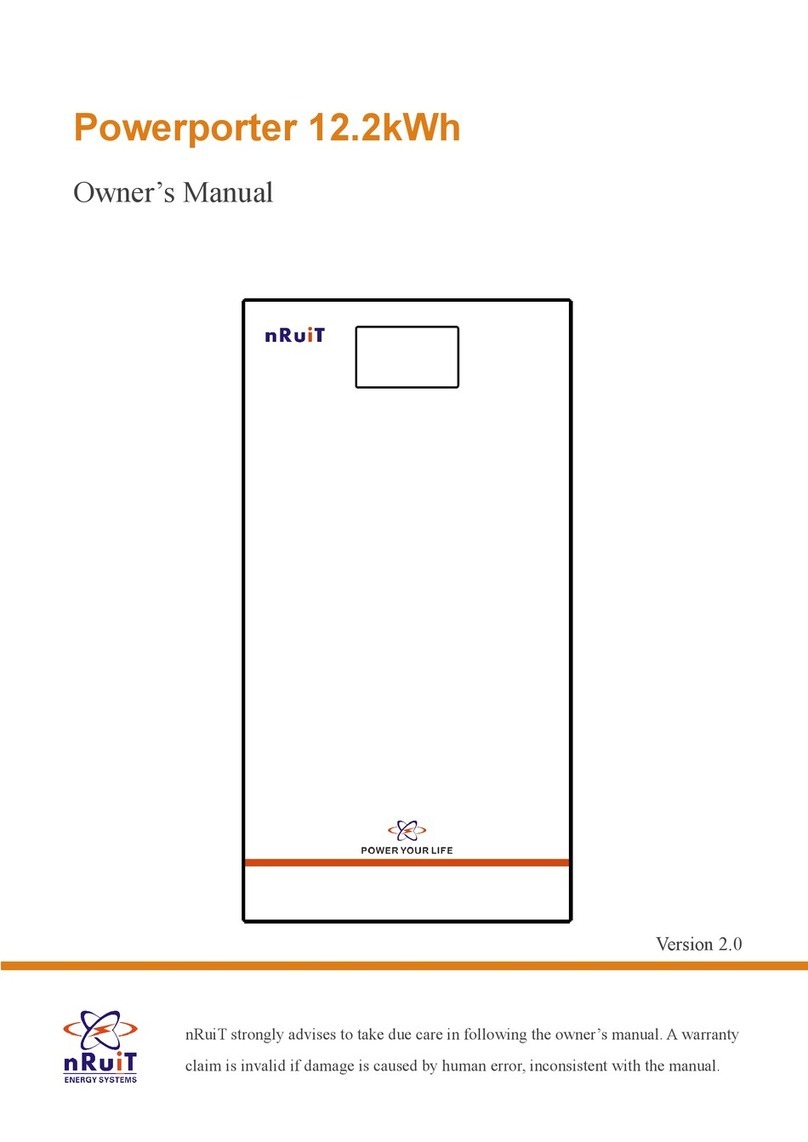Thunder WEEKENDER User manual

1
For your personal safety, please ensure you
read and fully understand these warnings and
instructions before operating the Weekender,
supplied battery charger and optional accessories.
CONGRATULATIONS ON
YOUR PURCHASE OF YOUR
THUNDER WEEKENDER!

2
CONTENTS
3. Warnings
4. Thunder Weekender specifications
6. Installing your battery
7. Operating the LED display
9. Charging your battery in the Thunder Weekender
12. Using the accessory ports
13. Using the 240 Volt power inverter
14. Transporting the Thunder Weekender
15. FAQs and trouble shooting
Contents

3
• When the Weekender is equipped with a battery it may exceed
single person lifting capacity. Always ensure proper lifting
techniques are used when moving the Weekender.
• To prevent possible electric shock, always ensure persons
(including children) who have not read and fully understood this
manual and the operating procedures of the Weekender are supervised,
and do not play or tamper with the Weekender.
• For your safety and to prevent possible electric shock, never dismantle
the Weekender, there are no serviceable components inside the unit
and your warranty will be void if opened.
• Never insert foreign objects into the Weekender’s 240 Volt power socket.
• To prevent a possible short circuit, do not allow conductive
objects near your battery’s terminals.
• Do not expose the Weekender to weather conditions such as
rain, hail, snow, wet areas or high particle / dust environments.
• Ensure the Weekender is always positioned on a flat, even surface
to avoid tipping and possible battery leakage. Some batteries contain
acid that can damage eyes or skin upon contact.
• Ensure there is adequate ventilation when charging your battery
within the Weekender. Do not blanket or cover the top of your battery
inside the Weekender. For your own safety, do not smoke or allow
an open flame near the battery inside the Weekender.
• Ensure correct sized wiring is supplied to the Weekender when connecting
to your vehicle. A qualified Auto Electrician should be consulted
prior to vehicle fitment or temporary connection.
• Operating the 240 Volt inverter without an adequate ground connection
to the earth terminal point (1) may cause an electrical hazard.
• Do not attempt to recharge a non-rechargeable battery with the
Thunder Weekender battery charger.
• For your safety and to prevent possible electric shock, never dismantle
the Thunder Weekender battery charger, there are no serviceable
components inside the unit and your warranty will be void if opened.
• Always check that the AC supply cord on the Battery charger is not damaged.
An electrician must be consulted to repair the cable, should any damage occur.
• For your safety and to prevent possible electric shock, ensure the
Thunder Weekender battery charger is not left to operate in wet areas
or submerged under water.
WARNINGS
THUNDER WEEKENDER
THUNDER WEEKENDER BATTERY CHARGER
Warnings

4
Earth Terminal Point
Positive Connection
Jumper Leads
(Sold Separately)
USB Socket
USB Control Switch
240 Volt
Battery Charger Input
50 Amp Anderson Plug
Connection
Standard Accessory
Socket x 2
Merit Style Accessory
Socket x 2
Master Switch
240 Volt Inverter
Control Switch
240 Volt Power Socket
Negative Connection
Jumper Leads
(Sold Separately)
1
2
7
8
9
10
11
12
3
4
5
6
THUNDER WEEKENDER SPECIFICATIONS
Thunder Weekender Specifications

5
1Earth Terminal Point The safety earth terminal point for the 240 Volt inverter.
2Positive Connection Jumper Leads
(Sold Separately) 12 Volt 400 Amp. Once the Thunder Weekender jumper leads are connected.
3Negative Connection Jumper Leads
(Sold Separately) 12 Volt 400 Amp. Once the Thunder Weekender jumper leads are connected.
4Master switch 12 Volt 400 Amp. The main control switch for all the 12 Volt outputs, including the
jumper cable connections. (Please note master switch does not control 240 Volt charging).
5240 Volt Inverter Control Switch Power switch activating the 240 Volt inverter.
The green LED indicates system output is good, red indicates system overload.
6240 Volt Power Socket 10 Amp, 240 Volt pure sine wave inverter connection, 300 Watt continuous,
400 Watt max output for 1 second with automatic overload protection.
7USB Socket 5 Volt 2.0 Amp.
8USB Control Switch Power switch activating the USB socket. The green LED indicates USB output is active.
9240 Volt Battery Charger Input Direct connection plug for the supplied 6 Amp, 7 stage Thunder battery charger.
10 50 Amp Anderson Plug Connection 12 Volt with 50 Amp automatic reset circuit breaker. Can be used as an auxiliary output or a
charge input (refer to the “Charging your battery in the Thunder Weekender” section of this manual).
11 Standard Accessory Socket x 2 12 Volt, with 15 Amp automatic reset circuit breaker per socket.
12 Merit Accessory Socket x 2 12 Volt, with 15 Amp automatic reset circuit breaker per socket.
Thunder Weekender Specifications

6
• Ensure the Weekender is on a flat, level surface and the
master switch (4) is in the OFF position.
• The front locking tab can be released and the lid lifted.
• Inside the battery box are three nylon Velcro straps that will assist in
securing your battery in place. For ease of use, ensure these straps are
hanging out of the case, or held back whilst inserting your battery.
• Your battery is best placed with the Positive (+) post aligned
with the red cable and Negative (-) post to the black cable.
• With the battery in place, the straps can be firmly connected.
Two of the Velcro straps connect from the front of the battery over
to the rear, the third will connect from side to side.
• Once the battery is secured using the three connection points, the
terminals can be connected to the battery. Many deep cycle batteries have
battery posts with wing nuts or screws for termination, the Weekender
eyelets can connect directly to these. If your battery comes with standard
battery posts only, it is recommended that Positive and Negative battery
terminals are purchased to connect your battery to the Weekender.
• Recommended battery terminals (not supplied) can be purchased
from your specialist spare parts outlets or your local Auto Electrician.
Warning: When fitting terminal, ensure that you do not touch both
Positive and Negative terminals with a metal object such as a spanner.
• The red cable eyelet connects to the Positive (+) battery terminal.
The black cable eyelet connects to the Negative (-) battery terminal.
• Once the terminals are connected and tight, the lid can be shut and secured
and the master switch (4) can now be turned on.
• Before using the Weekender, the appropriate battery selection needs to be
made to ensure the display can provide accurate information.
(See page 7 for instructions on setting the battery type)
INSTALLING YOUR BATTERY
How To Use The Thunder Weekender

7
• With the battery connected, and the master switch (4) turned ON, the
Weekender display will be activated once the ON/OFF button (18) is pressed.
• To save power the LED screen will turn off after 60 seconds. Pressing the
ON/OFF button (18) again will turn the screen back on for another 60 seconds.
• There are four buttons below the LED display that enable the user
to control and select battery options; up arrow (21), down arrow (20),
OK (19), ON/OFF (18).
• The first selection required is battery type (13). Select from GEL, LEAD ACID,
CALCIUM, AGM by scrolling through the four options using the up arrow
(21) and down arrow (20) buttons. Once the desired battery type option is
displayed, press the OK button to confirm your selection.
• Once the battery type is selected, the monitor will display the battery
Amp hour options (16).
• The available options are between 60 and 140 Ah. Any of these options can
be selected by scrolling through the options using the up arrow (21)
and down arrow (20) buttons.
• If your battery’s Amp hour rating is between two possible options
on the Weekender LED display (for example your battery is 105 Ah
and available are 100 Ah or 110 Ah) it is recommended to select
the next highest Amp hour rating available.
• Press the OK button to confirm your selection.
Your Weekender is now ready to use.
OPERATING THE LED DISPLAY
Battery Type
13
Battery Voltage
14
Output Current
15
Battery Amp Hour
16
Remaining
Power
Percentage
Remaining Time
(Hours)
17
22
Display
On/Off
OK
Down
Up
18
19
20
21
How To Use The Thunder Weekender

8
ADDITIONAL DISPLAY INFORMATION
Additional information that your Weekender displays when the ON/OFF (19) button is pressed.
Battery Voltage
Output Current
Remaining Time
(Hours)
Battery Voltage
Displayed during battery charging and discharge.
Output Current
Will only read current draw on connected appliances
(not when charging) and does not include the power draw
the 240 Volt inverter will consume from your battery.
Remaining Time
Displays the hours of battery life remaining
based on the output current (including 240 Volt inverter draw).
NOTE:
Low Voltage Alarm
When the battery falls to 30% capacity, the remaining
red bars in the power percentage display begin to flash
and the Weekender will release an alarm every
60 seconds to alert you to recharge your battery.
How To Use The Thunder Weekender

9
There are two ways to charge your battery inside the Weekender.
i) By using the 240 Volt battery charger (supplied) with the Weekender; or
ii) By adding an external 12 Volt DC charging instrument such as a
DC-DC charger, smart solenoid or a 12 Volt solar power setup with
regulator connected to the Weekender through the 50 Amp
Anderson plug.
i) Using the 240 Volt Thunder Weekender battery charger
• With your battery installed and connected in the Weekender,
you are ready to use the supplied battery charger.
• Included with the battery charger are a set of alligator clamps and
connector cable with 8mm eyelets that can be used with the battery charger
on 12 Volt negatively grounded vehicle batteries.
• Switching the Weekender master switch (4) to the OFF position will ensure
appliances that are connected will not drain your battery inside the Weekender.
If accessories in the Weekender are left on and their power consumption
exceeds the output of the battery charger your battery will not charge.
• Connect the battery charger’s Weekender connection into the
240 Volt battery charger input (9).
Note: the battery charger supplied with the Thunder Weekender must
only be connected to a mains 240 Volt connection, not via a secondary
power source such as a 240 Volt inverter.
• Plug the battery charger into the mains power supply and turn ON.
• Select battery type by scrolling through the options via the battery
selector button.
Note: if you have an AGM battery, select the LEAD ACID battery type option.
CHARGING YOUR BATTERY IN THE THUNDER WEEKENDER
Mains Cable
Alligator Clamps
Connector Cable
Battery Charger
Weekender Connection
How To Use The Thunder Weekender

10
CHARGING YOUR BATTERY IN THE THUNDER WEEKENDER
The Thunder Weekender battery charger is protected from;
• Over charging
• Reverse polarity
• Over temperature
• Short circuiting
• When the Thunder Weekender 240 Volt battery charger has been connected
to the battery in reversed polarity (when using alligator clamps), the
FAULTY BATTERY LED indicator will be flashing and the charger will not
supply an output charge voltage.
• Never leave the battery charger unsupervised until the charging cycles
are complete.
Disconnecting the Thunder Weekender battery charger
• Your battery is fully charged when stage 7 is illuminated, but
can be stopped at any stage by turning off, and disconnecting at
the mains connection.
CHARGING VOLTAGES
GEL LEAD ACID / AGM CALCIUM
CHARGING STAGES 14.3 Volt 14.8 Volt 15.6 Volt
BOOST 14.8 Volt 15.2 Volt 16.2 Volt
FLOAT 13.3 Volt 13.7 Volt 13.7 Volt
EXPECTED CHARGE TIMES
YOUR BATTERY AMP HOUR RATING CHARGE TIME TO 50% CAPACITY
60Ah 5 hours
100Ah 9 hours
160Ah 14 hours
BATTERY CHARGER SPECIFICATIONS
INPUT RATING 240 VAC / 50 Hz
Operating temperature -15°C to +40°C
Maximum charge current 6 Amp
Minimum start voltage 0 Volts (will revive a completely discharged battery)
Charger type 7 stage pulse
Environment protection rating
IP65 (dust protection, and low pressure moisture protection)
How To Use The Thunder Weekender

11
7 stage charge curve
The Thunder Weekender battery charger employs a 7 stage charging program.
These stages automatically switch from one to the next without any user
input required.
1. Desulfation
In the initial startup stage, a high frequency voltage pulse assists in “waking up”
a deeply discharged battery. This method of pulse charging can also help reduce
the buildup of sulfate crystals that may have formed on the battery plates during
the time it was discharged. This stage will last as long as it takes the battery to
reach approximately 10 Volts.
If the battery charger is connected, and your battery is only slightly discharged,
this stage may only be activated for a short time before automatically moving to
the soft start program.
2. Soft start
After the battery charger is connected, most conventional battery chargers will
immediately apply a high charging voltage output. This can cause a high amount
of gassing and heat generated by the battery that can affect individual battery cell
voltages to become uneven, lessening the life span of your battery.
The soft start function eliminates this by starting the charge process slowly.
Battery electrolyte and cell voltage is given a chance to even out prior to the
main bulk charging process, greatly increasing the batteries charging capability.
3. Bulk
This is the main charge stage where the battery charger will operate at its
maximum output current and voltage until it reaches the correct levels as required
from the selection made with “battery selection” button (different battery types
require different charge voltage levels). The charging period of this stage is
determined by the capacity and charge state of the connected battery.
4. Absorb
After the bulk stage, the battery charger will automatically begin to reduce
its current output whilst maintaining the required voltage (depending on the
battery selection). When the current has reached a predetermined threshold
level, charging will halt, allowing the next stage ‘analysis’ to be performed.
5. Analysis (testing the battery whilst charging)
After the absorption stage, the battery charger will start the analysis stage and will
stop charging the battery for approximately one minute. At this point, if the battery
voltage drops too quickly past the charger’s set parameters, the battery charger’s
selected battery LED will begin to flash, and if connected to the Weekender, the red
and grey terminals in the LED display will also begin flashing. If the battery passes
the test without any faults detected, it will move to the next ‘Boost’ stage.
6. Boost
After a successful result from the analysis stage, the battery charger will
now enter the boost stage where voltage is increased to maximum output
and current is reduced to approximately 25% of the rated output.
This stage brings the battery safely up to a 100% charge state.
7. Float
This stage evens out voltage between all cells and will maintain a constant pulse
voltage with very small current. This stage will remain on indefinitely whilst the
battery is connected and is perfect for long term maintenance. Keeping your
battery on this maintenance charge will ensure it is always 100% charged and
in turn reduce the chance of sulfation, extending battery life. During long term
maintenance it is important to periodically check battery fluid levels if it is not a
sealed or maintenance free battery.
CHARGING YOUR BATTERY IN THE THUNDER WEEKENDER
DESULFATION SOFT START BULK ABSORB ANALYSIS BOOST FLOAT
How To Use The Thunder Weekender

12
ii) Using an external DC-DC charger or solar regulator.
• Your battery can be charged through the 50 Amp Anderson plug connection
via a DC-DC charger product or solar panel and regulator products
(sold separately)
Caution: Anderson connections have Positive (+) and Negative (-) symbols
inscribed on the plug to ensure correct polarity when connecting.
For your reference, The Weekender Anderson connection point is
wired according to these symbols.
• For the Weekender battery to accept an external charge, the master switch (4)
must be in the ON position.
• The Anderson connection is protected by an automatic 50 Amp reset circuit
breaker. Your maximum input charge current will need to be under this rating.
• Always ensure a qualified installer has fitted your external charger.
Refer to your purchased product for instructions on fuse protection,
locations and sizes and also correct cable selection.
• The LED display does not indicate the input charge current, only the battery voltage.
The Standard Accessory and Merit Accessory ports simply require the
connection of your 12 Volt accessory. All four sockets are protected by
separate 15 Amp automatic reset circuit breakers.
Always ensure the Weekender is mounted on an even, flat surface before
connecting to the accessories sockets, and all accessories are disconnected
before moving the Weekender.
Positive
connection Negative
connection
CHARGING YOUR BATTERY IN
THE THUNDER WEEKENDER USING THE
ACCESSORY PORTS
How To Use The Thunder Weekender

13
The Weekender is equipped with a 300 Watt, 240 Volt pure sine wave inverter.
Pure sine wave inverters differ from standard modified sine wave inverters by
releasing a more accurate voltage over time that reflects a mains power source.
As modified sine wave inverters cut voltage much faster, they do not provide
an adequate power supply for more sophisticated appliances such as voltage
conversion, and motoring products (for example, a laptop power supply
and power tools).
Earth terminal point (1.)
As the Thunder Weekender is a portable power pack with a built in 240 Volt
inverter, a suitable connection needs to be made from the Weekender’s earth
terminal point (1) to a grounding point on your vehicle or boat.
If the Weekender, and the 240 Volt inverter are being used as a stand alone
power source away from any vehicle or boat input, the best earth connection
point is your battery negative terminal inside the Weekender.
Warning! Operating the 240 Volt inverter without an adequate ground connection
to the earth terminal point may cause an electrical hazard.
• Once a correct connection is made to the Earth terminal point (1) ensure
the Weekender 240 Volt inverter control switch (5) is in the OFF position
before connecting an appliance.
• Always check your appliance power consumption before connecting to
the Weekender 240 Volt power socket (6) making sure the product is
not rated over 300 Watt.
• Once your appliance is connected, you can turn the 240 Volt inverter
control switch (5) ON. The green LED will be displayed if the 240 Volt
output is working.
• If an appliance is connected to the 240 Volt power socket (6) and the
power consumption is too high, the inverters internal circuit breaker will
trip and the red LED will display above the inverter control switch (5).
The inverter control switch must be turned OFF, then the appliance
disconnected before turning the inverter control switch back on again.
Pure sine wave Modified sine wave
USING THE 240 VOLT POWER INVERTER
INVERTER SPECIFICATIONS
OUTPUT WAVEFORM PURE SINE WAVE
Output voltage 240 VAC ± 3%
Frequency 50/60 Hz ±0.05%
Output power (Constant) 300 Watt
Output power (Peak) 400 Watt for 1 second (With automatic over load shutdown)
Input voltage 10 - 15 Volt
Over voltage protection YES - 16 Volt shutdown
Under voltage protection YES - 9.5 Volt shutdown
Thermal protection YES - 60°C Output reduction
How To Use The Thunder Weekender
POSITIVEVOLTAGENEGATIVE
TIME
POSITIVEVOLTAGENEGATIVE
TIME

14
Note: The Thunder Weekender is designed to hold the largest possible battery so
power output can be sustained as long as possible without needing to recharge
your battery. Extreme driving conditions may cause the battery to slide inside the
Weekender. Nonconductive materials such as timber is recommended to fill the
gaps between the battery and the insides of the battery compartment to prevent
battery movement under harsh driving and boating conditions.
• WhentransportingtheWeekender,cavitiesunderthelidprovidestrapdown
points to secure the unit using straps (not included). This allows access to
your battery without removing from your vehicle.
Soft gripping straps are recommended. Using ratcheting straps, or tying down
too tightly, may cause the Weekender to flex and possibly cause damage to
the case.
• TheWeekenderlidprovidessufficientairgapstoallowforbatteryventilation,
always ensure nothing is packed on top of the Weekender.
• DonotallowadditionalweighttobeplacedontopoftheWeekenderlid,
it may flex or break.
TRANSPORTING THE THUNDER WEEKENDER
Transporting the Thunder Weekender

15
What is the definition of Ah?
Ah represents the battery term Amp hour. This is a rating given to most deep
cycle batteries and provides an indication of battery life capacity.
For example if a battery has a 100 Ah (Amp hour) rating it can provide an output
of 1 Amp for 100 hours, or 100 Amp for 1 hour (until completely discharged).
How can I calculate what battery is best for me?
Calculating the best battery for your use is easiest when you know the power
demands of your connected accessories. By measuring your power demands
you can calculate your total Amp draw, then estimate how long you expect to
use the accessories. For example, with a 10 Amp draw, over 6 hours,
your minimum requirement is a 60 Ah battery.
I have connected my battery and turned the master switch ON, but the
LED display will not activate when I press the ON/OFF (19) button?
Check the battery terminals are connected tight. If there is still no display,
your battery may be completely discharged. Connect the Thunder Weekender
240 Volt battery charger following the instructions and recharge your
battery before checking the LED display again.
I have selected my battery and Ah rating, but the Remaining Power
Percentage display is not reading 100%?
Your battery inside the Weekender may not be 100% charged.
Connect the Thunder 240 Volt battery charger and recharge your battery
before checking the LED display again.
How do I know that my battery is fully charged inside the Weekender?
If you are using the Thunder Weekender 240 Volt battery charger, the unit will
be in stage 7 (float) when battery charging is fully complete and the Weekender
will display 100% on the remaining power percentage display. If you have
charged your battery via the Anderson connection using an external 12 Volt
power supply such as a DC-DC charger, the remaining power percentage
display will read 100%, this may stay at 100% if the external 12 Volt power
supply is kept on and the power draw is lower than the input charge.
For example, a 40 Amp DC-DC charger will keep the battery in positive charge
and at 100 % with a 12 Volt 3 Amp fridge drawing power from you battery.
When should I recharge my battery inside the weekender?
The Weekender LED display will release a single ‘beep’ every 60 seconds once
your battery falls to 30% remaining charge. The final three red bars on the
remaining power percentage display (18) will flash. To best protect your battery,
it is recommended to recharge at this time or as soon as possible.
Discharging your battery to 0 Volts may cause internal cell damage.
How can I measure how long the Thunder Weekender 240 Volt battery charger
will take to recharge my battery?
The Thunder Weekender 240 Volt battery charger has an output rating of 6 Amp
during the bulk stage of its charge cycle. When you have your battery Ah rating,
you can roughly calculate the length of time your battery will take to recharge
from zero volt to 100% charge using the Thunder Weekender 240 Volt battery
charger by reversing the calculation used to measure battery drainage.
For example a 100 Ah battery at zero capacity with a 6 Amp charge input will take
roughly 16.6 hours to be charged. (100 / 6 = 16.6 hours).
With your battery inside the Weekender, the LED display can provide a calculation
of battery capacity via the remaining power percentage display. You can use this
remaining calculation to also aid in calculating charge times.
For example, a 100 Ah battery at 60% capacity with a 6 Amp charge input
will take roughly 6.6 hours to be charged (40 / 6 = 6.6 hours). The Thunder
Weekender 240 Volt battery charger, along with all smart battery chargers will
only charge their rated amperage for a period of time before regulating.
How do I know what stage the Thunder Weekender 240 Volt battery charger is at?
The battery charger displays the current charging stage on the charger above
the Voltage algorithm, when the charger moves to the next step, the last stage’s
green LED will remain on. Once charging is complete all seven LEDs will be
displayed and the battery charger will continue in the float stage.
FAQ’S AND TROUBLE SHOOTING
Frequently Asked Questions & Trouble Shooting

16
Can I charge the Weekender using solar panels?
Yes, you can use solar to charge the battery (once the panel output
has been regulated) via the 50 Amp Anderson plug connection (10).
Ensure the master switch (4) is in the ON position.
Can I charge the Weekender using a DC-DC charger?
Yes, just like solar charging the Weekender can accept a 12 Volt charge input
from a DC-DC charger. This can be achieved by connecting the DC-DC charger
outputs to the Weekender’s 50 Amp Anderson plug connection, and ensuring
the master switch (4) is turned ON.
When I charge my battery in the Weekender, the LED display does not show
a current output?
The LED display will only show output current that is being drawn from your
battery as it discharges.
The red LED is displayed when I turn the Weekender 240 Volt inverter.
If the red LED display is active when the 240 Volt inverter control switch has
been turned on and a 240 Volt appliance is connected, the appliance may have a
power demand that is too high for the inverter.
FAQ’S AND TROUBLE SHOOTING
Frequently Asked Questions & Trouble Shooting
Table of contents
Popular Batteries Pack manuals by other brands
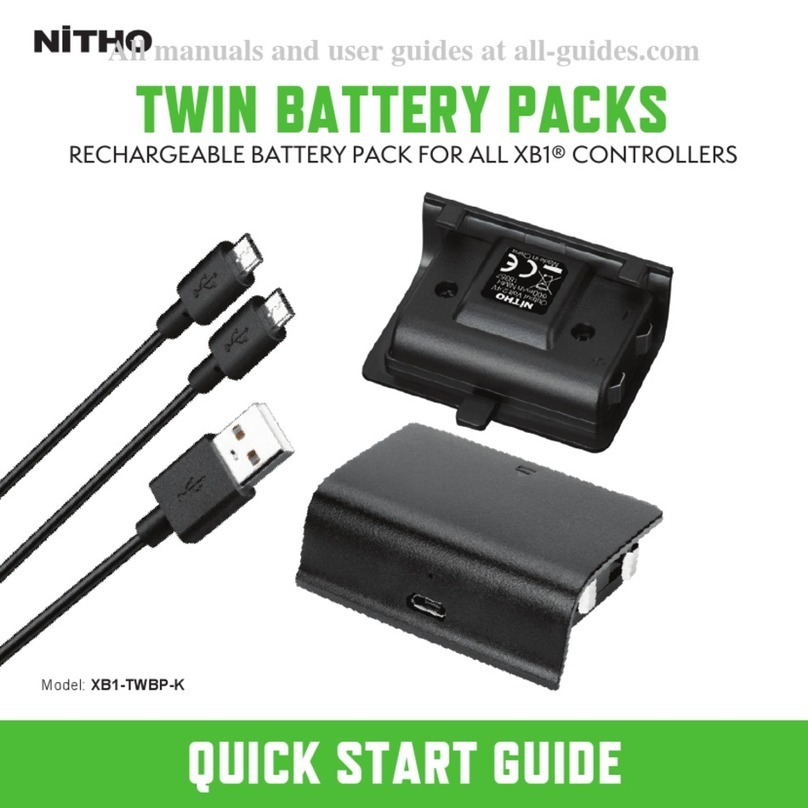
Nitho
Nitho XB1-TWBP-K quick start guide

XD
XD XDXCLUSIVE P322.65 Series manual
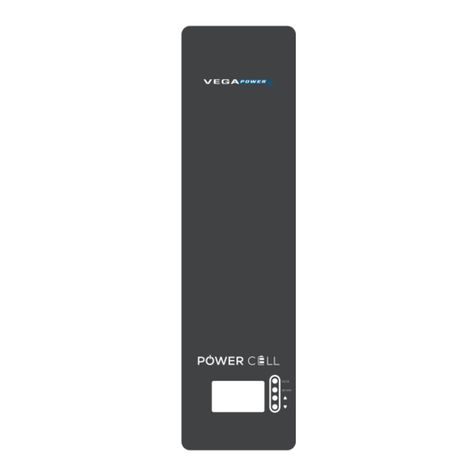
VEGA POWER
VEGA POWER Power Cell PCW050050N Instruction and operation manual
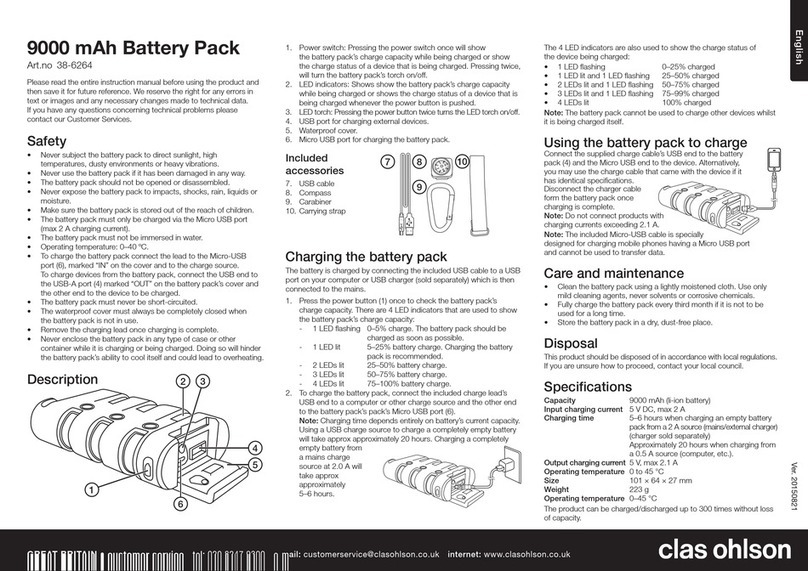
Clas Ohlson
Clas Ohlson 38-6264 user manual
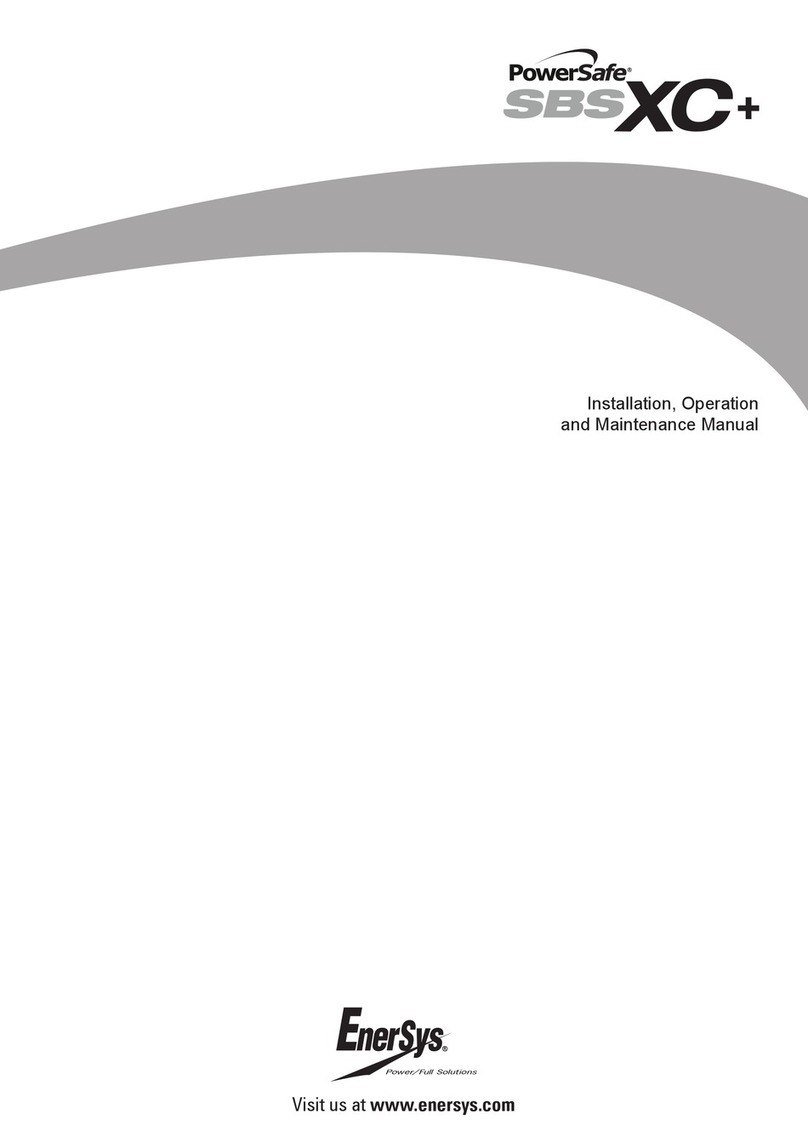
EnerSys
EnerSys PowerSafe SBS XC+ Installation, operation and maintenance manual

Sungrow
Sungrow SBR096 manual
